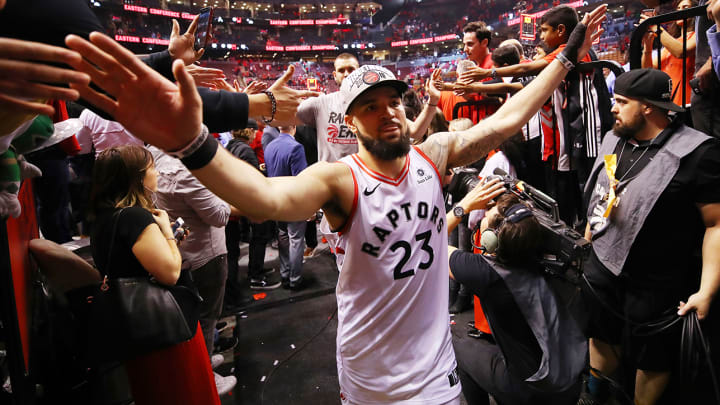How Raptors' Fred VanVleet Found His Shooting Stroke Ahead of NBA Finals

Years from now, when Canadians explain how the Raptors made the NBA Finals, they will begin with Kawhi Leonard, the superstar forward whose arrival last summer transformed the team. They will also praise Kyle Lowry, the All-Star point guard who anchored the most successful era this franchise had known. And there will surely be fond words for Masai Ujiri, the executive who put the final pieces together, drafting forward Pascal Siakam, gambling heavily to acquire Leonard and picking up center Marc Gasol in midseason.
But to the people who just lived through Toronto's postseason run, I'm not sure there was anything crazier than the sight of 25-year-old backup point guard Fred VanVleet rediscovering his touch when it mattered most.
To review: The Raptors trailed the Bucks 2-1 in the Eastern Conference finals after winning Game 3 in double overtime. At that point, through 15 playoff appearances, VanVleet was 20 of 78 from the field (25.6%). In the previous round, against the 76ers, he had played just 16.8 minutes per game, down from 27.5 in the regular season. Even in the series-saving OT win over the Bucks, VanVleet missed 10 of his 11 shots.
Then two things happened. First, on May 20, VanVleet spent an off-day rushing from Toronto to Rockford, Ill., for the birth of his first child, Fred Jr. He stayed there for roughly 24 hours before flying back to Toronto for Game 4.

"Anytime you have a kid, it's a life-changing experience," VanVleet said. But fatherhood proved to be game-changing as well. Over the final three games of the series, VanVleet made 14 of his next 17 three-pointers; among players with at least 15 attempts, that was the highest percentage across three games in playoff history. He averaged 16.0 points in 32.1 minutes, providing firepower to a team that had looked thin against the Sixers. The stretch also included a 90-minute drive from Milwaukee to Rockford for another 24-hour baby visit, a handful of much-needed naps and three franchise-altering wins for the Raptors.
"It's a hell of a story, man," he said after the Raptors advanced. "What this franchise has been through, what this city has been through in terms of its basketball growth.... Back-to-back games [we were] down double digits. Fighting back. Clawing. Total team effort. That's the way you want to do it."
Toronto will need VanVleet to keep this run going. The Raptors become a different team when he's hitting shots. Swarming Leonard becomes harder, and Lowry kick-outs become more dangerous. VanVleet can provide a depth advantage against the top-heavy Warriors, and if both teams go small, his shooting and energy can help Toronto match Golden State. The Raptors are heavy underdogs regardless, but the sudden and vital contributions of a 6-foot backup during the conference finals were a reminder that playoff basketball works in mysterious ways.
Whatever happens in the Finals, everyone can learn from the philosophy VanVleet introduced during the Bucks series. "No sleep,” he said. “Have a lot of babies. And let it fly."
